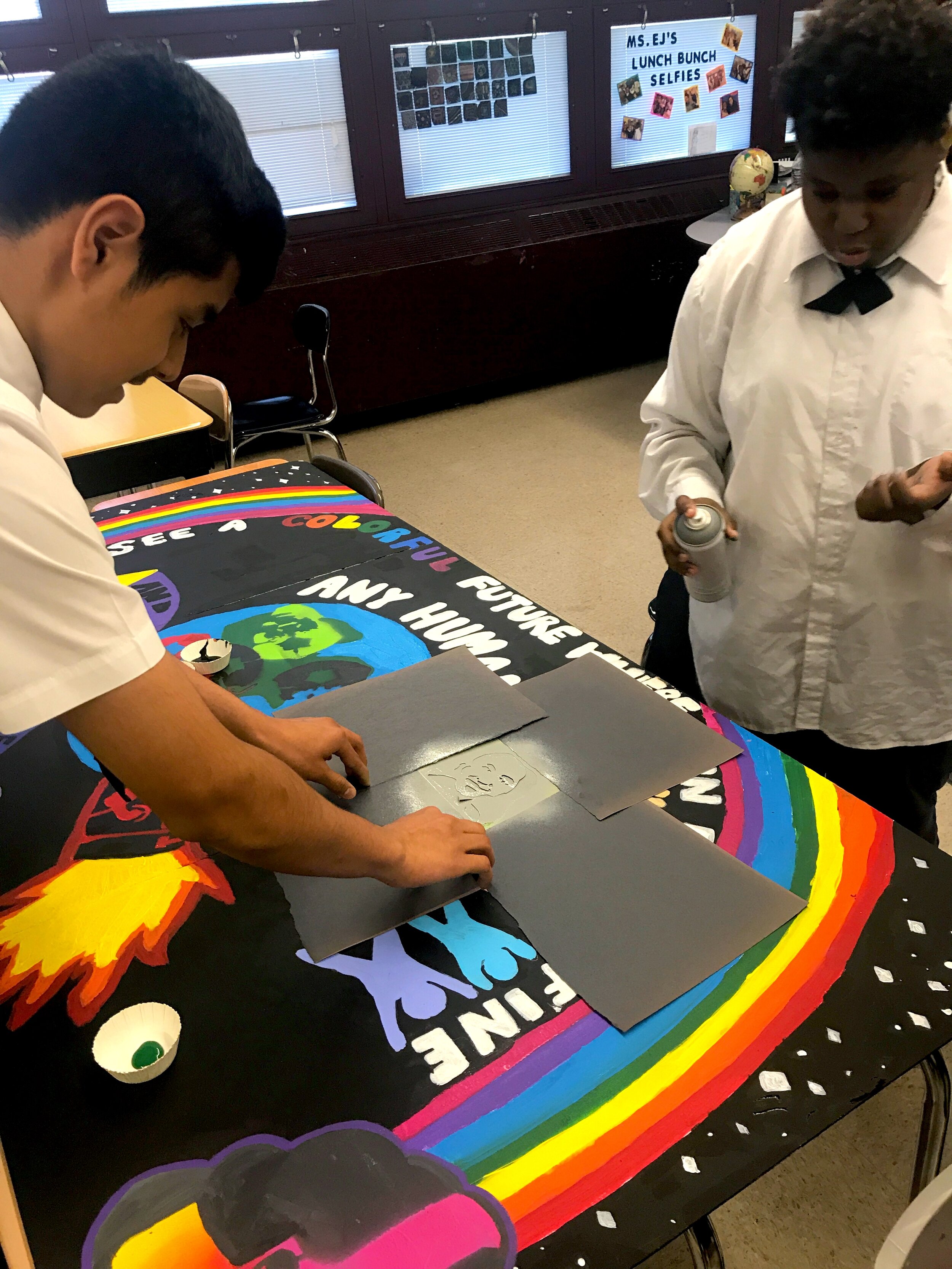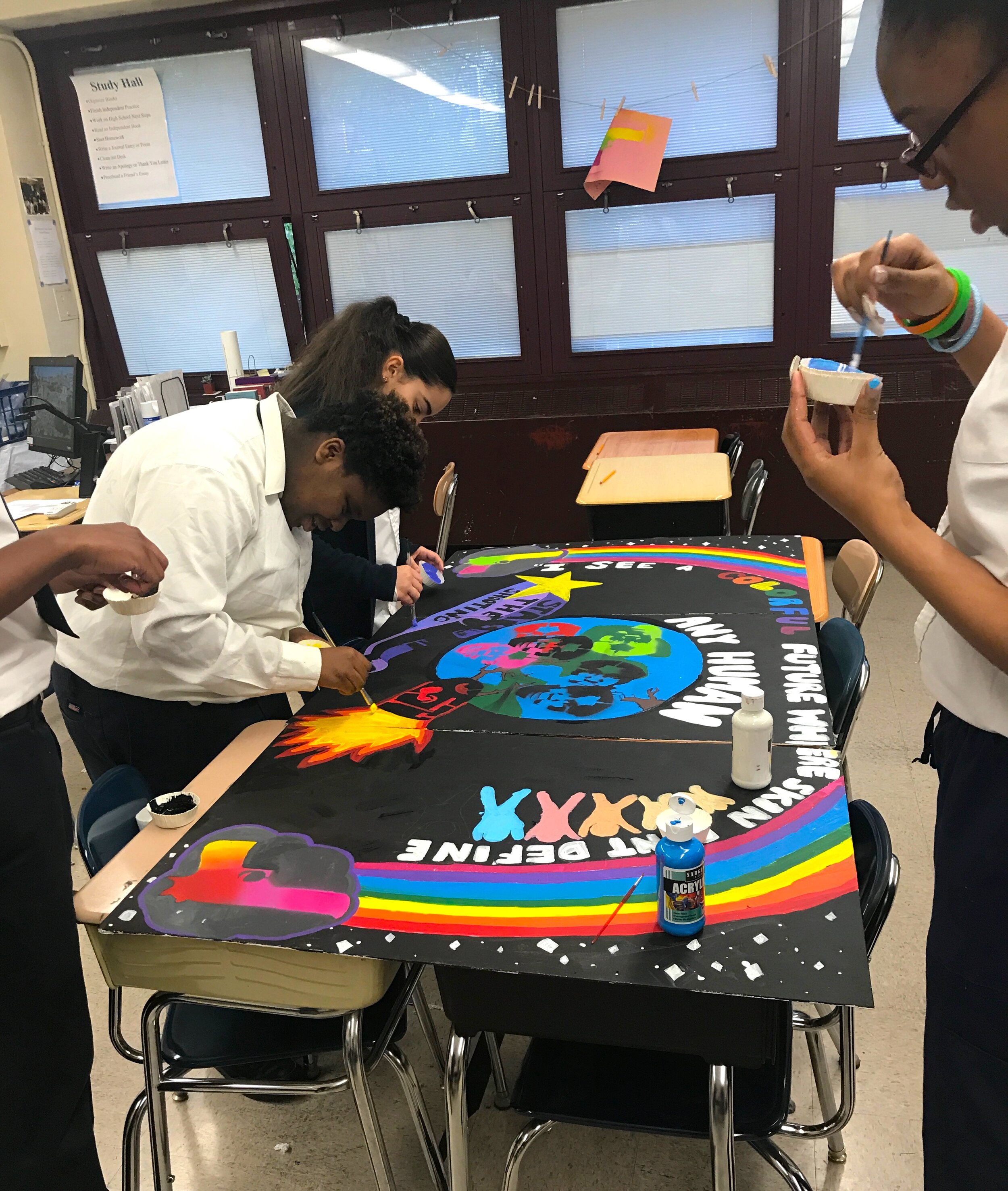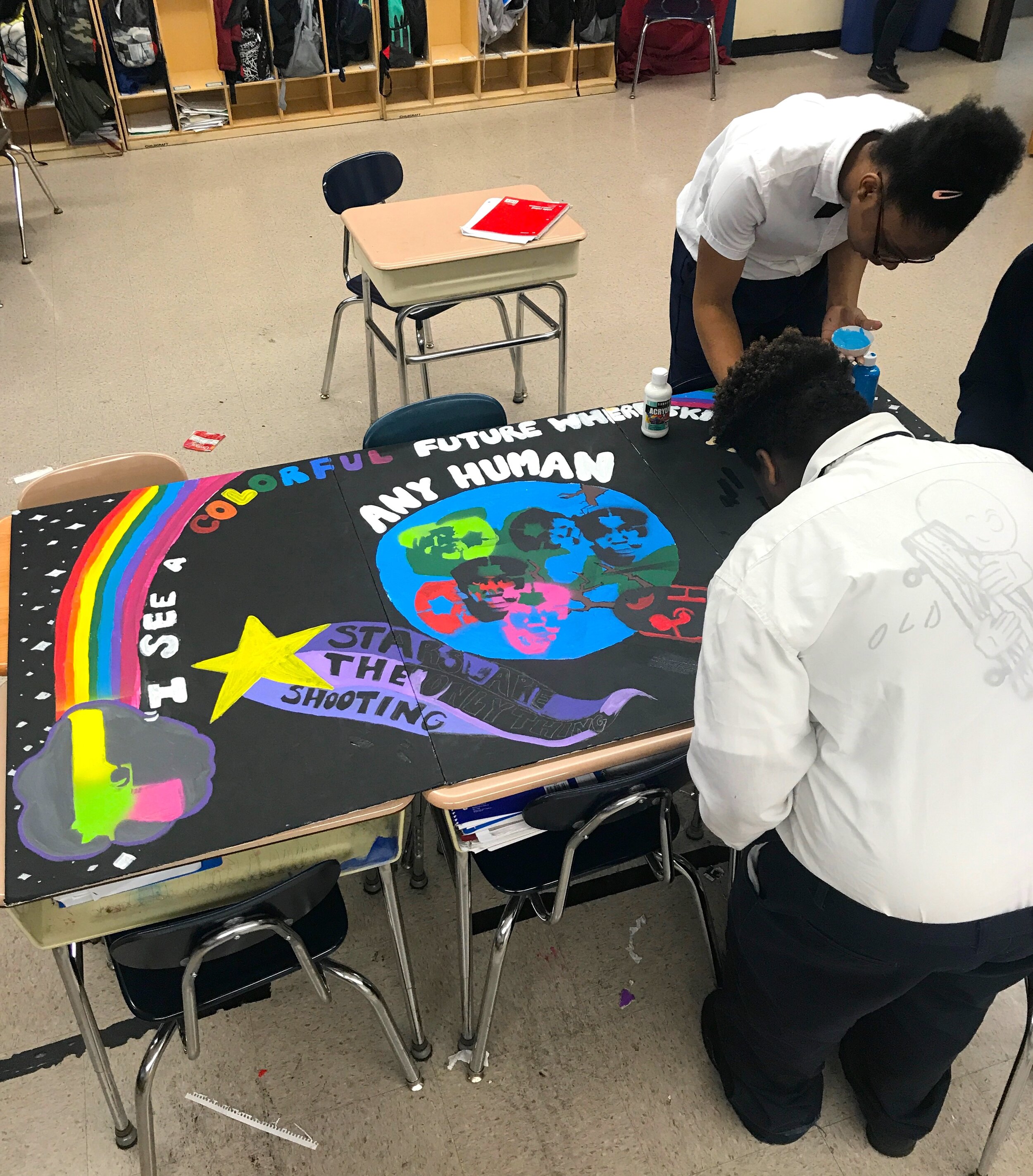K-8 Student Work and Projects
Kindergarten Pumpkins and Shadows
Kindergarten students practice drawing shapes while learning about warm colors and the fundamentals of watercolor painting in this lesson. Additionally, they discover how light is used in painting to create the illusion of 3D space by using Ebony pencils to form shadows.
1st Grade Colors and Feelings Creature Collages
After learning about Eric Carle’s painting and collage process and analyzing his work, 1st grade students use their imaginations to invent their own animals and use oil pastels, colored pencils and tempera paint to create specific textures. This project is part of a larger unit about color, where the student explore how light, bright, dull and dark colors are used to convey specific feelings in artwork. When inventing their creatures, students identified specific feelings they wanted to express and mixed their colors accordingly.









Kindergarten Garden Installation
As part of a larger unit about contemporary art, Kindergarten students explore installations including works by Yayoi Kusama, Kara Walker, Andy Goldsworthy and Rebecca Louise Law. They then work collaboratively using painting and collage techniques to transform part of the art room into a garden.
1st Grade Symmetrical Butterflies
1st grade students learn to create balance in their artwork while refining their drawing and painting techniques by making symmetrical butterflies. This project is part of a larger study about the principles of art where students practice making both symmetrical and asymmetrical balance.
2nd Grade Self-Portraits
In this project, 2nd grade students learn how many historical and contemporary artists created self-portraits as a means for exploring their identities, celebrating their differences and establishing a point of view as an artist and individual.
After viewing and discussing works by Kehinde Wiley, Mickalene Thomas, Vincent Van Gogh, Andy Warhol and Frieda Kahlo, the students learn how to draw their faces from observation using mirrors, mix colors to find their unique skin tones and create depth by mixing highlights and shadows.
Students learn just as much about themselves and each other throughout this project as they do drawing and painting techniques.





3rd Grade Drawing and Painting Projects
One-Point Perspective Neighborhoods
In their unit about the elements of art, 3rd grade students learn how to use the horizon line and a vanishing point to create the illusion of 3D space and then create value with color. In these watercolor and colored pencil works, students invent their own neighborhoods and use color and detail to express a specific atmosphere for the viewer to experience.
Bare Trees
3rd graders continue to explore value by painting bare trees. They first learn how to mix the primary colors to create warm, medium and cool browns and then add highlights and shadows by blending oil pastels on top of paint.


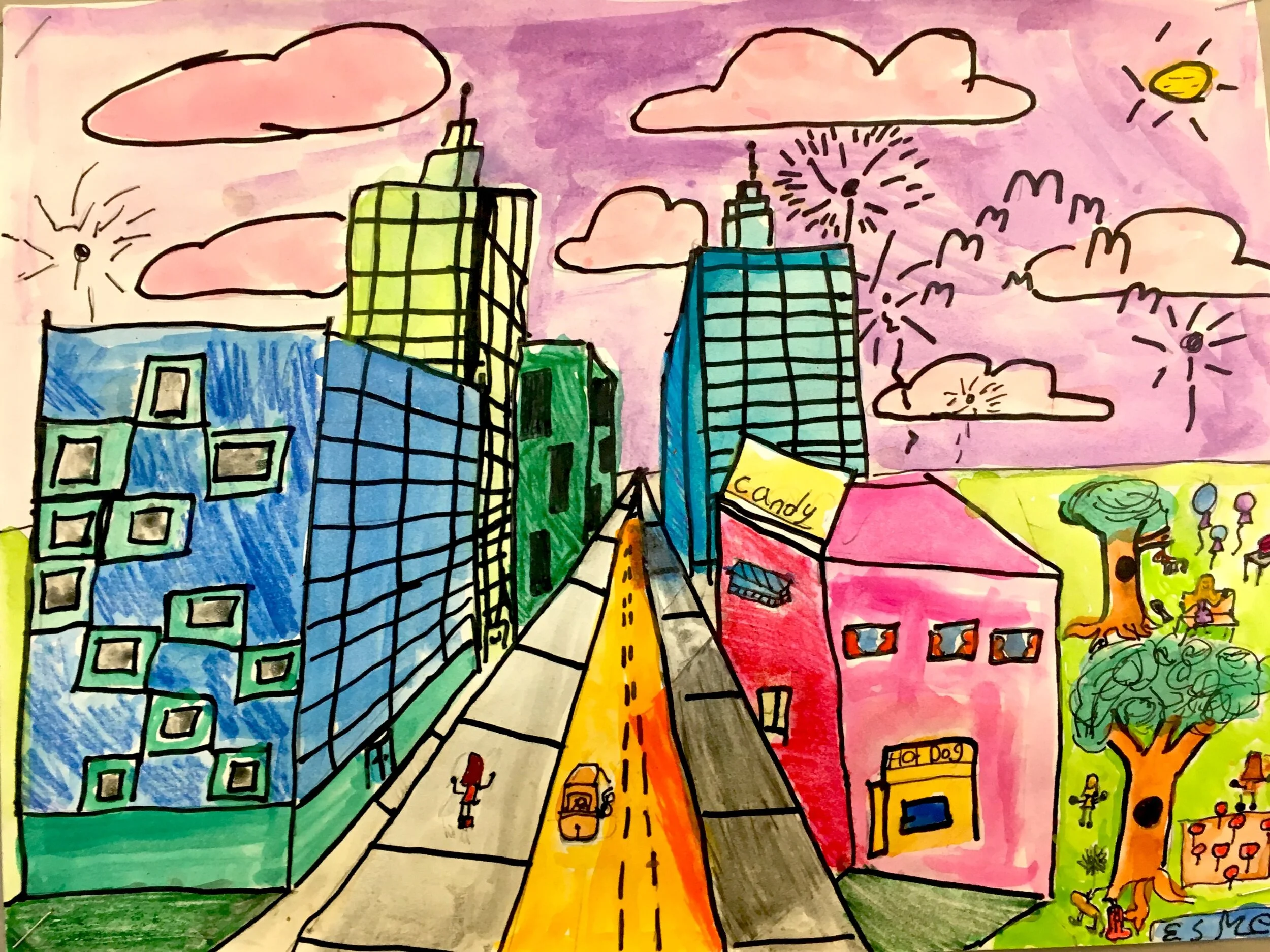



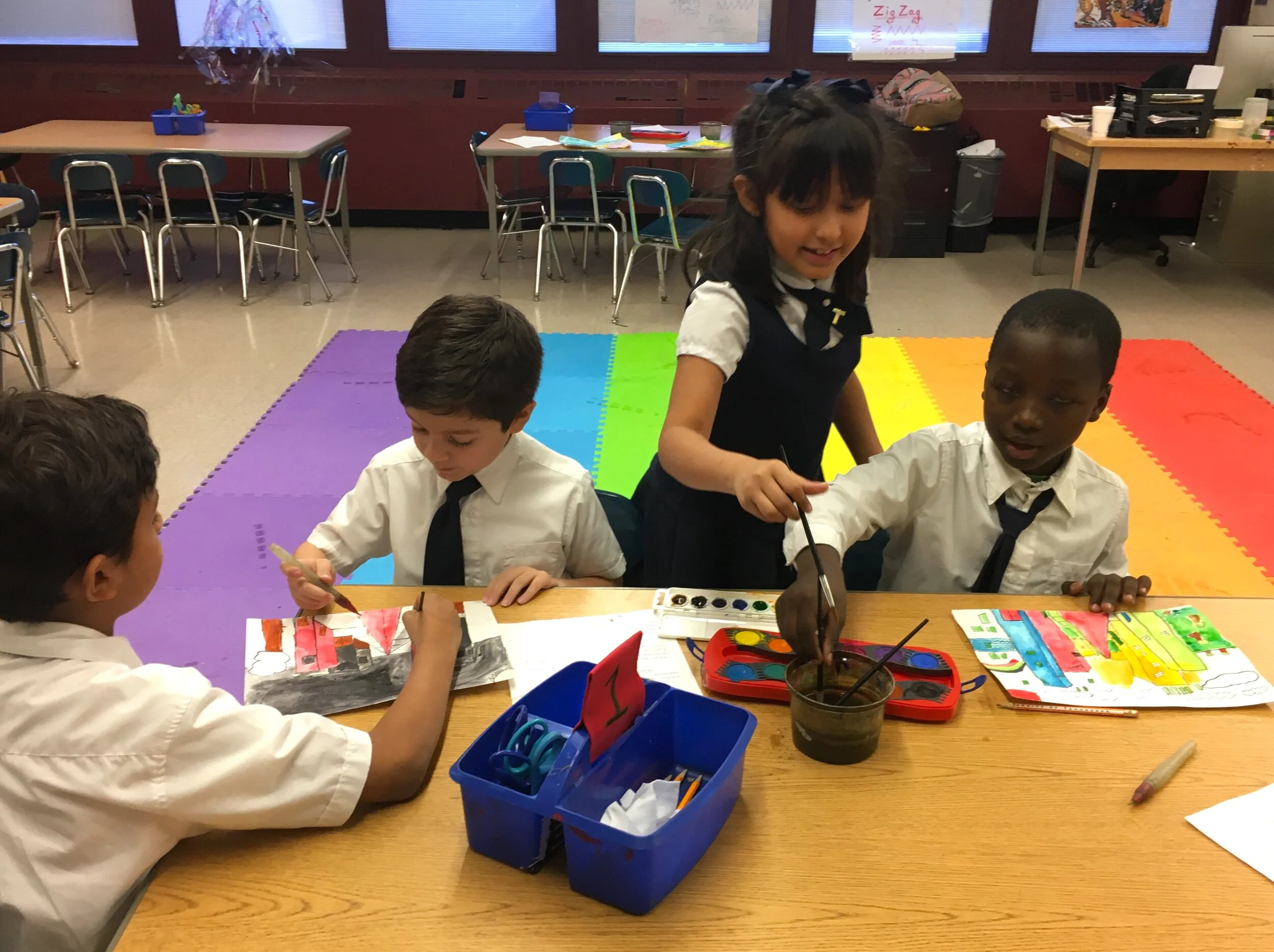
2nd and 3rd Grade Fiber Arts
2nd Grade Weaving
In this unit, 2nd grade students learn the fundamentals of weaving including winding the warp, selecting warp and weft yarns and the plain weave structure. As a part of their study of the principles of art, the students create contrast in their work through the use of color and size.
3rd Grade Tapestry Weaving
Building on their knowledge of plain weave from 2nd grade, 3rd grade students learn about tapestry weaving and advanced techniques including weaving shapes, joining them together and slit tapestry. Student learn about both Navajo and Peruvian tapestry weaving throughout this unit, comparing and contrasting their colors, imagery and purpose. The 3rd graders are then encouraged to use either or both cultural styles as inspiration for their own tapestry designs while also infusing their personal aesthetics and values as individual artists.
2nd Grade Embroidery
Following their study of weaving, 2nd graders continue to explore fiber arts by learning about Chinese and Palestinian embroidery. After learning about the differences in aesthetics, stitching, material and purpose, 2nd graders explain how both cultures traditionally infused symbolism into their embroidery to send messages and represent status. They then create their own symbols to share aspects of their identities and unique characteristics and embroider them onto burlap using the whip, running and chain stitches.


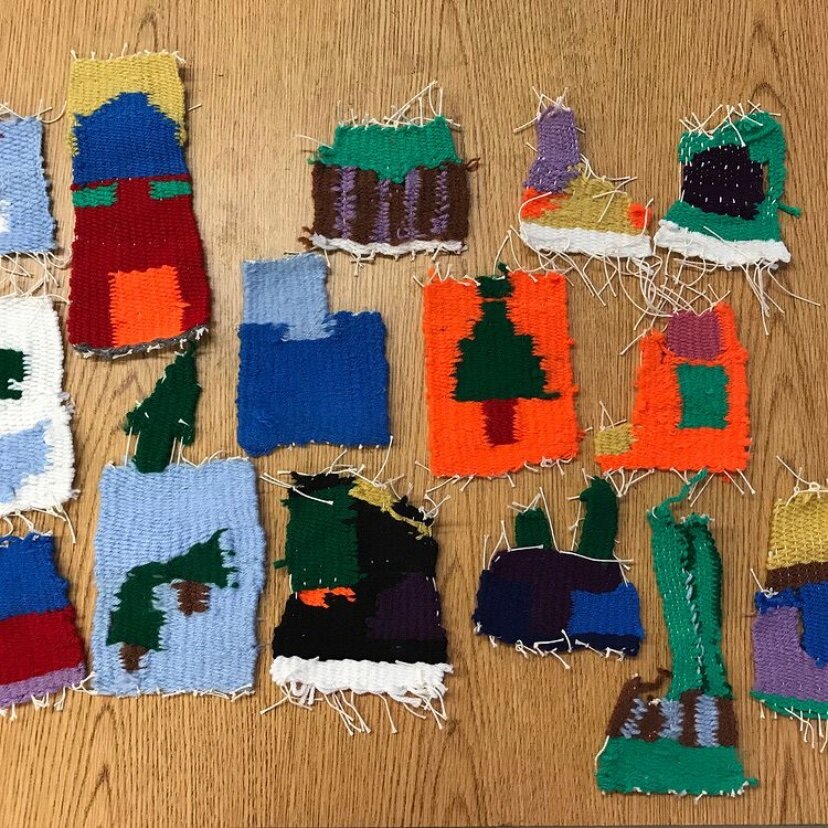




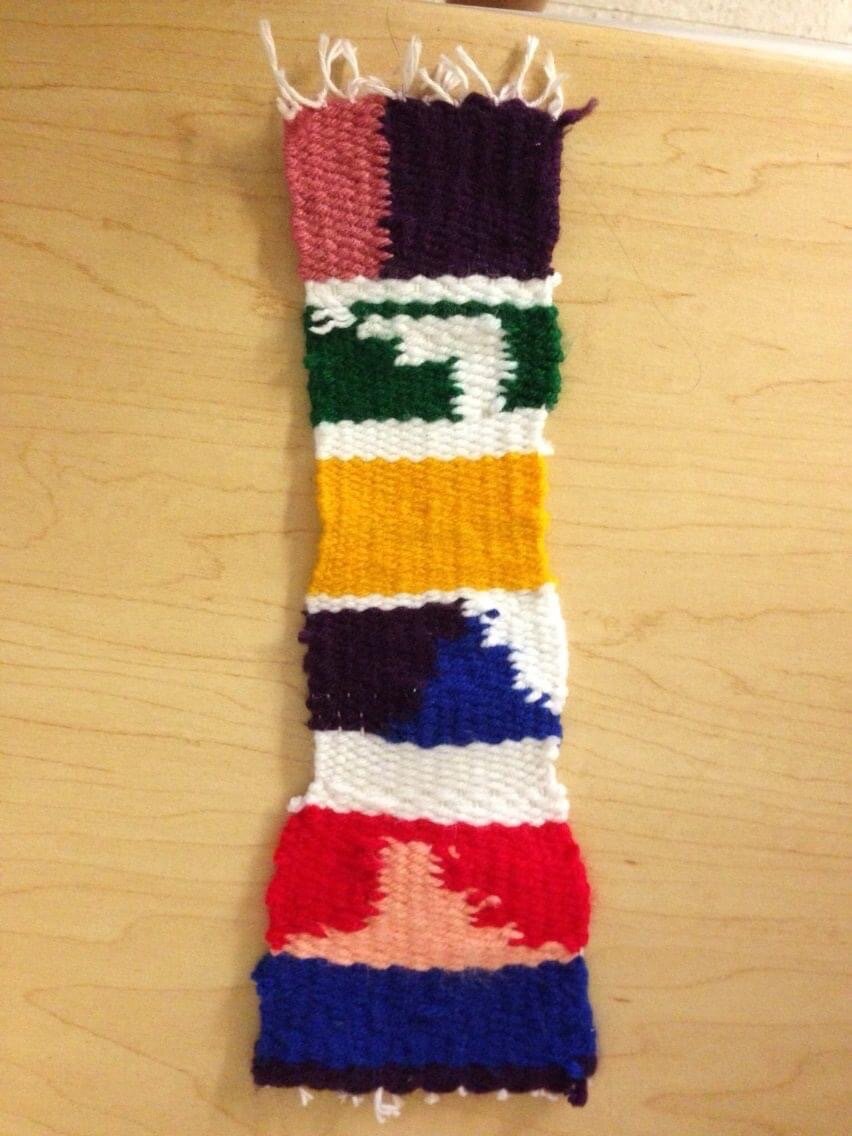
4th Grade Drawings from the Grid
Personal Heros
In this project, 4th graders learn the ancient method of drawing from the grid and how artists have used it throughout history to enlarge images and create a sense of realism. After examining how ancient Egyptians, Italian renaissance and many contemporary artists have used the grid in different ways, the students use a grid to enlarge their own source images. Each student draws a person in history, popular culture and/or their own lives who inspires them or has made an impact on their lives.
Mixed Media
After making their sketch, the students learn about mixed media art and use graphite, watercolor, oil pastel and marker to add texture and variety to their work. In order to create a sense of unity, they select their own limited color palette and assign specific materials and colors to create different values.


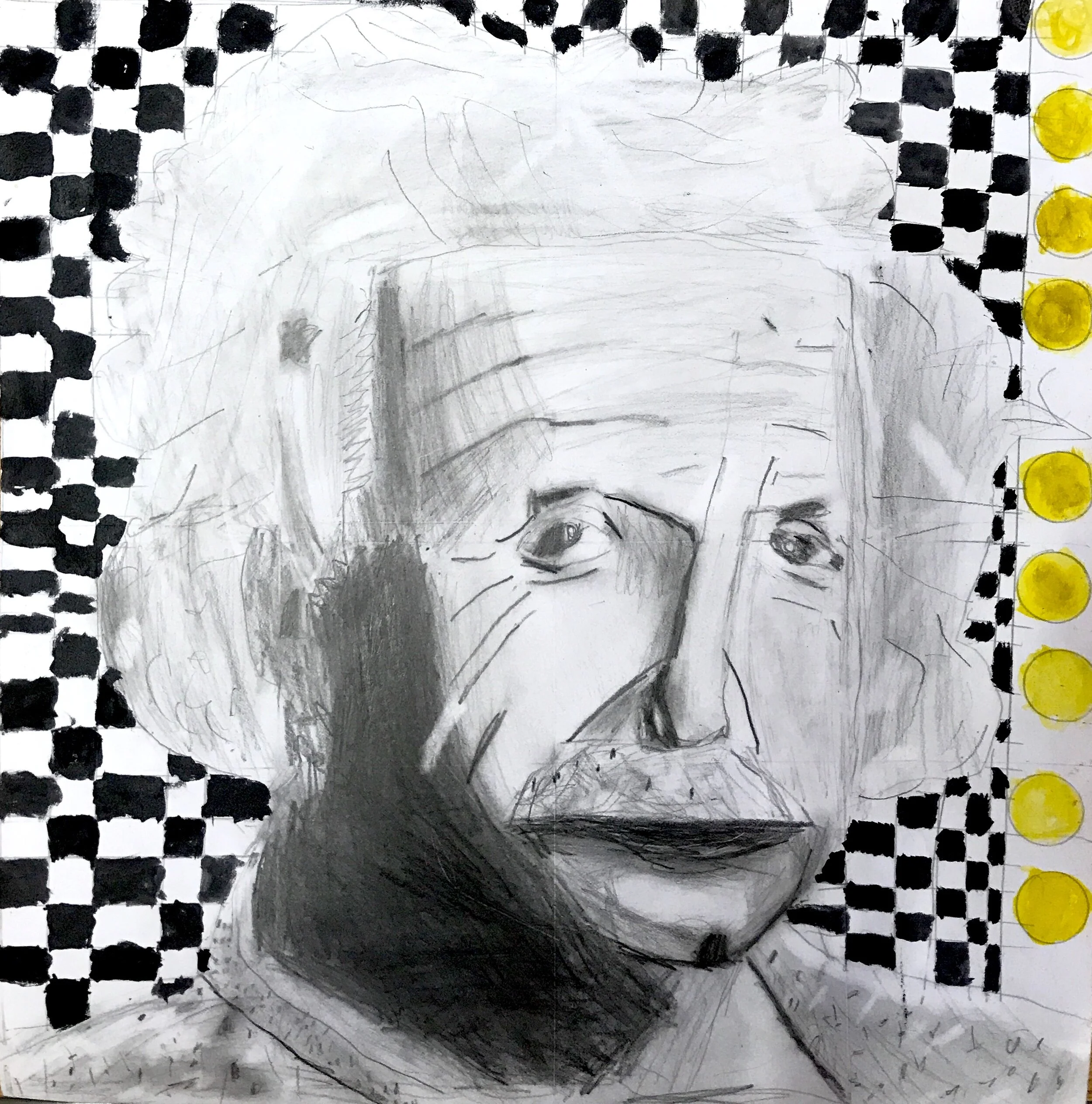

5th Grade Indian Textile Design
Wood Block Printing
5th grade students learn about the history and symbolism of Indian textile design and the process of traditional wood block printing still followed in Jaipur today. After analyzing the imagery and patterns unique to Indian textiles, 5th graders create their own designs, infusing the Indian design characteristics with their own aesthetics and points of view as individual artists.


8th Grade Street Art and Social Justice
Exploring Implicit Bias
8th graders begin this unit learning about Implicit bias, what it is and how it is the foundation for systemic racism in our society. The students then grapple with the concept that everyone has implicit bias and begin work on identifying their own by taking implicit bias tests through MTV’s lookdifferent.org. Although these lessons lead to difficult and at times painful conversations, students walk away with an understanding that the only way to make change is to work to undo the biases engrained within them and to make others aware of their biases.
Stenciling for Change
After exploring implicit bias, students learn about a variety of street artists who use their work to bring awareness to social issues and challenge others’ understanding of the world around them. 8th graders specifically examine works by Shepard Fairey, Banksy and TATS Cru to understand the process of stenciling and how it can be used to mass produce an image or message. They then make a stencil self-portrait to use in a campaign to bring awareness about implicit bias.
Challenging Bias
As a final step in this project, 8th graders reflect on biases others may have about them based on their age, race, religion, gender, sexual orientation and/or ability. They challenge others to reflect on the assumptions they make by adding text to their stenciled portraits, revealing their personal truths and who they are as individuals.
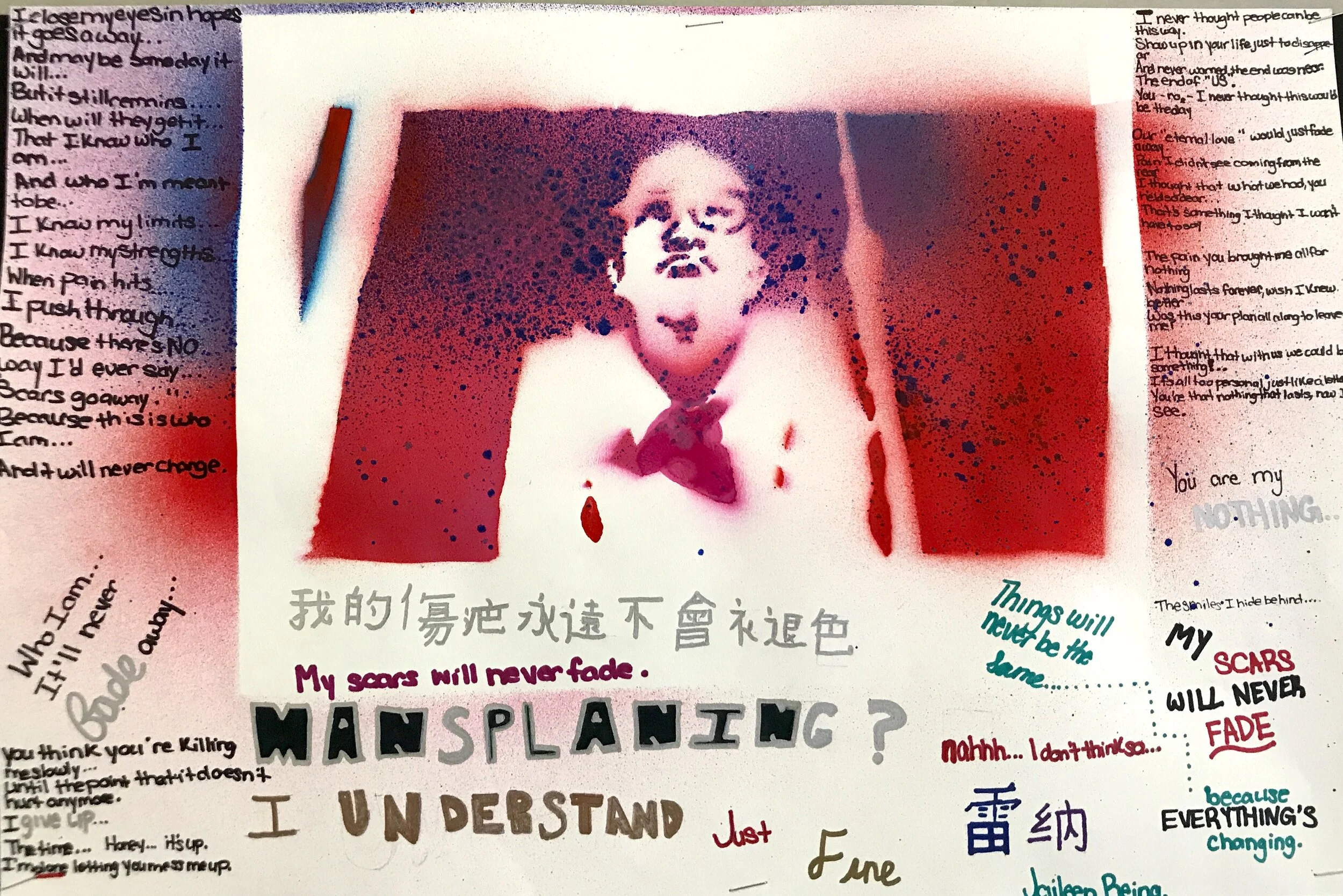
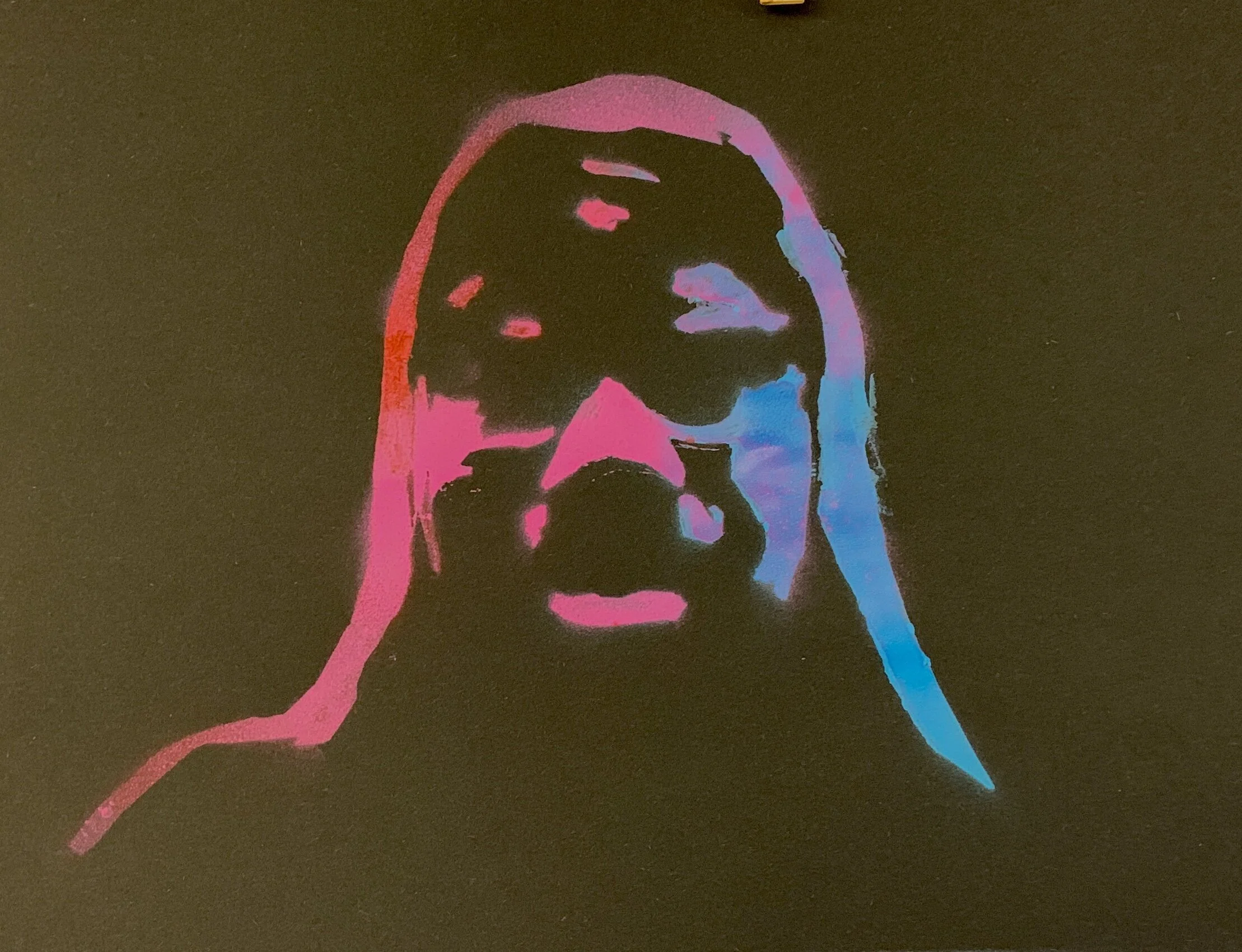
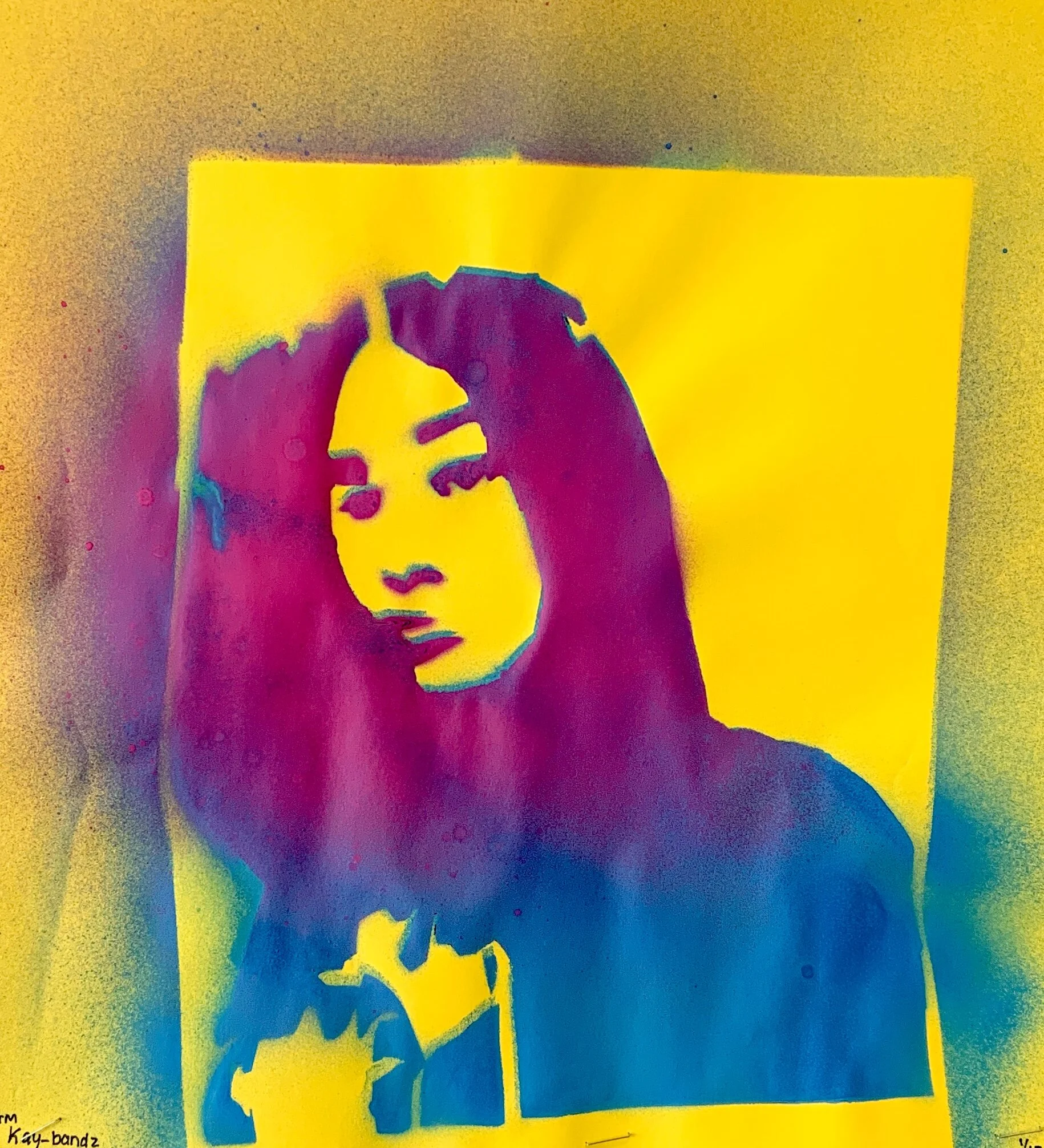


Collaborative Street Art Mural
As a final project in this unit, 8th graders combine the street art techniques they previously learned including stenciling, painting and graffiti lettering to create a collaborative mural about implicit bias. Students lead the entire design, execution and installation process for this project, using their voices and art as a vehicle for change.
